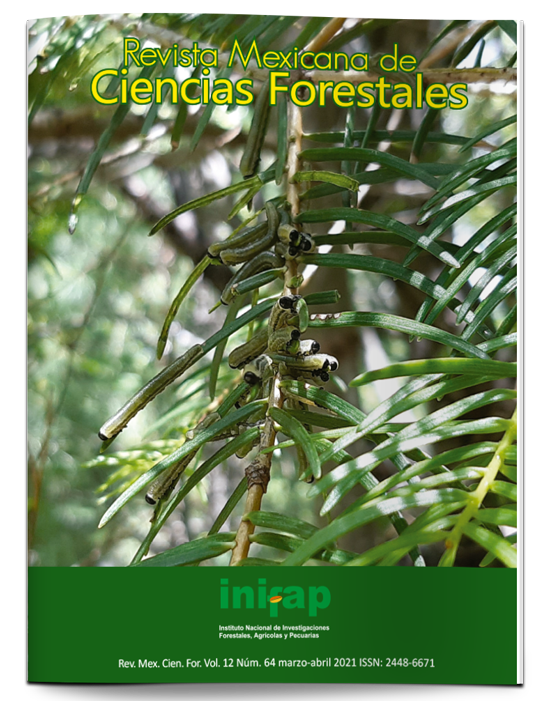Relación espaciotemporal de puntos de calor con superficies agropecuarias y forestales en San Luis Potosí, México
DOI:
https://doi.org/10.29298/rmcf.v12i64.857Palabras clave:
Clasificación supervisada, correlación, Landsat, modelos no lineales, tendencia, uso de sueloResumen
Es importante analizar la dinámica entre coberturas de uso de suelo para comprender las relaciones existentes en las superficies donde se presentan los cambios. También, en ocasiones, las modificaciones de cobertura son ocasionados por actividades humanas, como los incendios utilizados en actividades agrícolas. El objetivo de este trabajo fue analizar espaciotemporalmente si existe una relación significativa entre las superficies agrícolas, pecuarias (pastizales) y forestales con la incidencia de puntos de calor, en San Luis Potosí, México. Varios autores han utilizado la percepción remota y los SIG para modelar coberturas de uso de suelo, y han aplicado diversos algoritmos con este propósito. Para estimar las superficies (forestal, agrícola y pecuaria) se aplicó una clasificación supervisada a escenas Landsat 5 TM y Landsat 8 OLI. Además, se integraron dichas superficies en modelos no lineales: polinomio (2° orden), exponenciales y potenciales, así como multivariados para estimar puntos de calor; lo que resultó en un aumento sustancial en los coeficientes de determinación en los segundos modelos. En cuanto a los resultados, es posible predecir la ocurrencia de puntos de calor de una variedad de áreas bajo la agricultura, la ganadería y la silvicultura. En este caso, la superficie forestal fue la variable más significativa, seguida de la superficie ganadera. Se concluye que existe una relación entre la presencia de puntos de calor con tierras agrícolas en el área de estudio y se puede predecir la ocurrencia de puntos de calor basados en variaciones de las tierras agrícolas, pecuarias y forestales.
Descargas
Descargas
Publicado
Cómo citar
Número
Sección
Licencia
Los autores que publiquen en la Revista Mexicana de Ciencias Forestales aceptan las siguientes condiciones:
De acuerdo con la legislación de derechos de autor, la Revista Mexicana de Ciencias Forestales reconoce y respeta el derecho moral de los autores, así como la titularidad del derecho patrimonial, el cual será cedido a la revista para su difusión en acceso abierto.
Todos los textos publicados por la Revista Mexicana de Ciencias Forestales –sin excepción– se distribuyen amparados bajo la licenciaCreative Commons 4.0 Atribución-No Comercial (CC BY-NC 4.0 Internacional), que permite a terceros utilizar lo publicado siempre que mencionen la autoría del trabajo y a la primera publicación en esta revista. (no permite el uso comercial)
Los autores pueden realizar otros acuerdos contractuales independientes y adicionales para la distribución no exclusiva de la versión del artículo publicado en la Revista Mexicana de Ciencias Forestales (por ejemplo, incluirlo en un repositorio institucional o darlo a conocer en otros medios en papel o electrónicos) siempre que indique clara y explícitamente que el trabajo se publicó por primera vez en la Revista Mexicana de Ciencias Forestales.
Para todo lo anterior, los autores deben remitir el formato de carta-cesión de la propiedad de los derechos de la primera publicación debidamente requisitado y firmado por los autores/as. Este formato debe ser remitido en archivo PDF al correo: editorial.forestal@inifap.gob.mx
Esta obra está bajo una licencia de Creative Commons Reconocimiento-No Comercial 4.0 Internacional.






